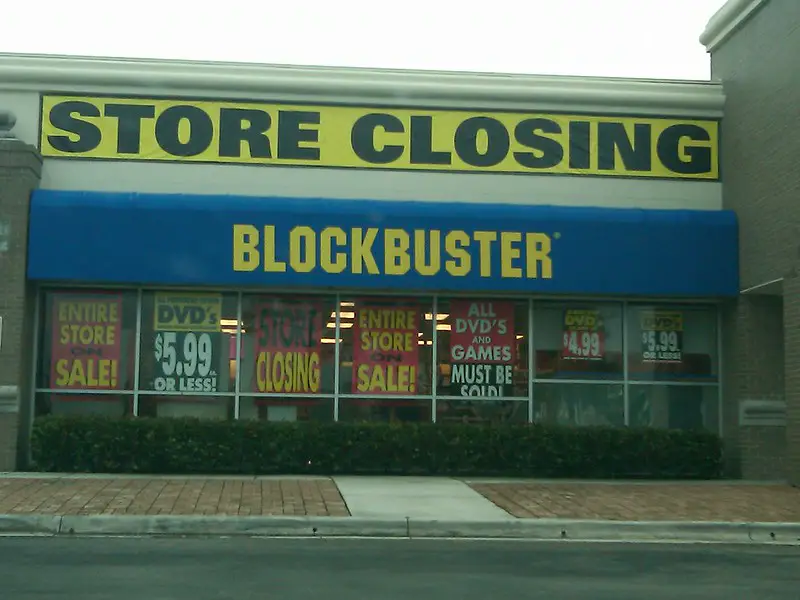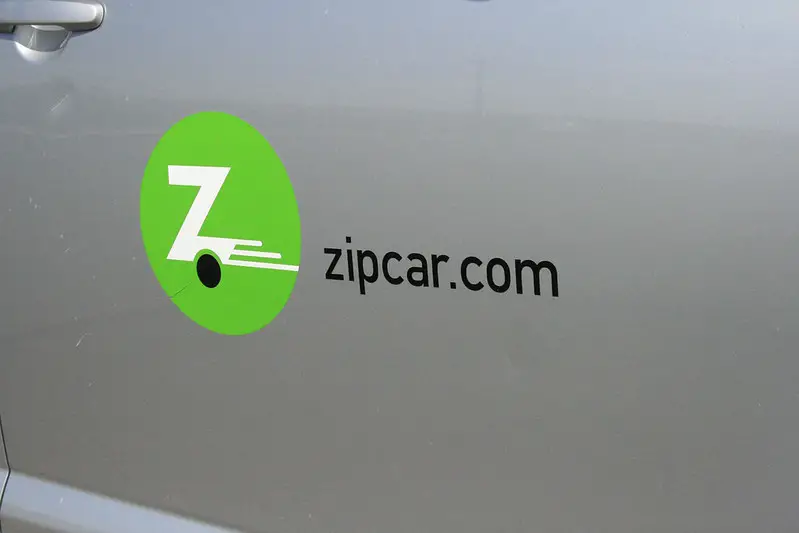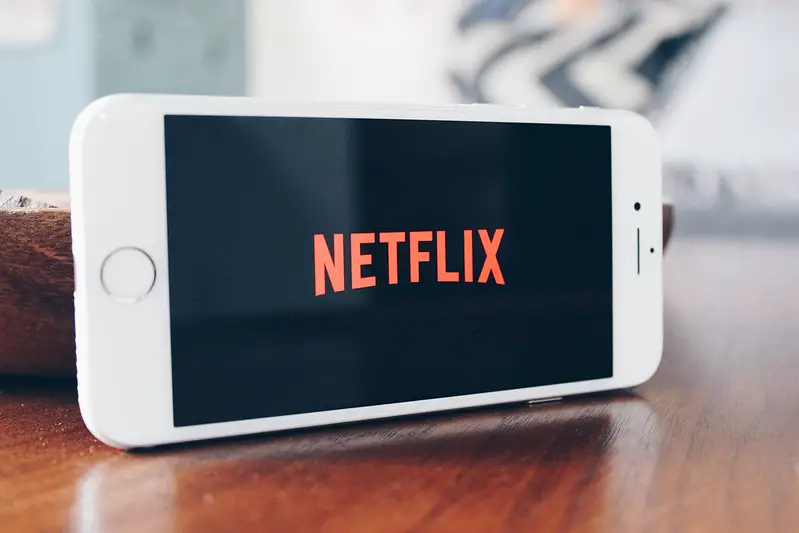A lot of business owners know the stories of the DVD rental chain Blockbuster. Once a famous and profitable retailer, Blockbuster reached its rock bottom when the traditional DVD rental model crumbled. It’s a sad story and a lesson for others. No business owner wishes to be the next Blockbuster.
Blockbuster is only an example of a business that failed to remain on top of the curve. This book summary provides many recommendations to assist present businesses to prevent a similar situation. As they emphasized, we’re presently in the middle of the digital time. Businesses that do not adjust to this digital era will be left behind. This contains those businesses that only pay lip service to the digital world, without completely accepting it.
Digital Darwinism needs you to add the digital era into the DNA of your business, not only to incorporate a website with a virtual tour of your business. It’s just a situation of time before digital technology turns out to be like electricity and is a continuous aspect of our everyday lives. Therefore, this is what future leading businesses will have to accept.

1 – Digital Darwinism is basically about getting accustomed to a transforming world and having a willingness to make necessary changes.
We regularly think in terms of “survival of the fittest.” However, what does that entail for present businesses, when quick global change is a current issue? You may reason that the most successful companies will continuously be the big ones with teams of experts and billions of money to spend.
However, as the author understands, Darwinism in the digital era is basically about being able to succeed by benefitting from that fast global change – it’s essentially about being able to adjust immediately to whatsoever the uncertain future may bring about.
Big businesses with a global reach that have been in existence for about 30 to 50 years are no more the most successful companies that are in existence. As a matter of fact, these businesses may be disadvantaged. Nevertheless, they can definitely become so stuck in their ways that it becomes really hard to make any type of change.
For instance, Sony invested a lot in creating devices like the Walkman and Discman to play music on cassettes or CDs. This enabled them to become market leaders. Later, MP3 and digital music took place. Sony could have changed into this new, and possibly really lucrative market.
However, if this digital music actually took off, what would occur to the entire Walkmans and Discmans? They’d be old-fashioned. No one would buy them because they wouldn’t sell. Thus, Sony considered the change to digital as a really dangerous act of self-disruption. Due to that, the company was uncertain to change to the new market and its top position was gone to more disruptive contenders.

Instead, a lot of businesses are just willing to make small gesticulations toward accepting new technologies. The author calls this a “bolted-on” method. An illustration of this is when a bank makes an app that enables a check to be deposited by snapping a photo of it, instead of reconsidering the need for using paper checks in this present day. They’re basically wedging technology into a dying system.
A good example is Heathrow Airport, London. A lot of money has been used in an attempt to update Heathrow, regardless of the fact that it’s situated in a place that makes it hard for planes to operate and will be an unmanageable mess irrespective of how many changes are made. At some point, a new airport will be made with space to grow in a practical place using modern technology at its very core. Meaning, basically trying to update a difficult, outdated system is unfeasible.
For legacy businesses, it’s really the exact circumstance. Rather than changing an ailing system, you need to be willing to make necessary changes so you can really adapt.
2 – The history of revolution around electricity, computers, and digitalization discloses understandings into the present internet age.
If one thing is sure, it’s that the future is uncertain. Definitely, there are many people ready to sound foolish by attempting to foretell the future; however, no one can really be sure of what is to come. With that being said, we can check the past and learn very much about what to anticipate in the future years
If we look back to our current history, we can identify three essential eras that show a pattern in how businesses react to new technology. By observing the beginning of electricity and computers, we can tell that we’re in the middle of a very alike era concerning the internet.
In each of these eras, people were totally hesitant to accept new technology and completely include it in society. Over and over again, people included the technology to their traditional methods of doing things. Old and new would clash one other in chaotic manners until, unavoidably, the new technology was acknowledged, completely incorporated and really normal in day to day life that it was virtually seamless.
This transpired with electricity; however, it took a very long time for that to happen. Beginning in the 1830s, when its potential for businesses and homes was first introduced, it took about 100 years for electricity to become familiar with. For over a long time, there was no regulation and factories that had depended on steam power were reluctant to amend their methods.

Also, it took a very long time for electricity to be utilized for really innovative reasons. For the majority of the aspect, companies used decades only to make electrified forms of machines and appliances that were already there. It took an era for companies to understand that they didn’t require updated factories; they only required new, electricity-focused factories.
A related process occurred with computers and digital technology, although in both situations the time it took from creation to mass approval took half as long as previous. For computers, there was a 50-year mid-period between the introduction and complete approval. In this era, careful businesses attempted to computerize only a few processes while preserving a lot of their traditional processes as possible.
Some of the struggles of the computer age were fixed with the emergence of the digital age, which comprised the internet. PCs and Macs, which had been incompatible, were now able to connect with each other over the internet. However, once again, we see ourselves with a lot of businesses only using modern technology on the edges of their business.
3 – To begin your own disruption you have to look outside the outer layers of your business.
A Harvard Business School academic named Clayton Christensen explained disruption in the business world as a new company that brings along new technology and a lesser price to challenge the legacy companies. However, this explanation doesn’t really relate.
When you consider some of the major disruptors in the latest years, such as Uber or Airbnb, you can identify that these businesses didn’t have a lesser price and neither did they only bring with them some new technology. Nevertheless, Airbnb customers might use more money than they would for a traditional hotel. What disruptors actually do is totally reconsider the manner of doing things, maybe operating a car service or operating in the hospitality industry. Meaning, they change the paradigm and basically adjust the way people do things.
For you to really disrupt an industry you need to do beyond bringing along some new technology and provide a lesser price – you need to go over the outer layers of your business and have brave innovation at the heart of your existence.
The outer layers of business comprise how you relate with your customers, your marketing strategies, what your product or service is and how you operate your business. A lot of businesses have added technology to these layers, like making use of emailed newsletters and Instagram accounts as marketing devices. A small number of them have put technology and really innovative means of doing business at their core.

Take Hertz a car rental company as an example. It enables you to send a recorded video of your customer criticism, instead of filling out an online form. It’s using technology as a device while staying dedicated to its traditional car rental business strategy. If Hertz were to truly accept the digital era, it would amend that main business idea to look like something related to how Zipcar, the rental service, works, and make the whole process app-based.
One of the secrets to creating an innovative idea is to consider ideas that aren’t the supposed parameters of your industry. Companies such as Uber and Airbnb removed the supposed parameter that a company had to have physical assets, such as cars and rooms, for them to connect customers with a ride from one point to another or a room to stay during their vacation.
When your idea discovers an answer that alters those parameters, you possibly will be on your path to changing the paradigm and initiating actual disruption.
4 – There are four methods to change your business; however, presently a lot of people are failing to be really innovative.
You don’t really need to be a new business for you disrupt your industry. As a matter of fact, there are basically four methods for any established business to change and be innovative.
The first one is self-disruption, which entails investing in a technology or manner of doing things that would if successful, make your present process outdated. This is also known as “cannibalism” in the business world and, although it can be dangerous and hard, it can also be really worth it.
Consider how Netflix did an extraordinary act of self-disruption when it changed its concentration from DVD rentals to streaming. After putting in $40 million dollars in new data storage in 2017, Netflix permitted its present members to stream a restricted number of hours of content at no additional cost, while their library of streamable content grew gradually
In 2011, Netflix made payment plans for renting DVDs and streaming content different. Not just that, they made the streaming plan at a lesser price and changed the DVD plan to a service known as Qwikster. Within months, stock prices dropped from $42 a share to below $10, and Wall Street was telling CEO Reed Hastings to resign.
However, Netflix understood that streaming was the key to the future. After enduring the primary storm, it was obvious that many new subscribers were enticed to the lesser subscription price, and the library of content kept growing. Presently, those shares are selling at above $100.

This takes us to the second method of changing: continual reinvention. Rather than creating a rigid and inflexible operation plan, make having room to accustom an important and vital aspect of your business. Consider how Facebook naturally grew from a place where you reconnect with an old friend to be the most powerful media company worldwide. It’s not by chance that Facebook uses millions yearly on research and progress.
The final two methods to encourage change are making measured and hedged bets. A measured bet is similar to BMW making a quite small number of electric vehicles in their BMWi series. BMW doesn’t depend on these cars as their actual source of profit; however, the venture lets it create new technology. Perhaps one-day BMWi technology will be utilized to advance the company’s other car models.
Hedging is what companies such as Google, Dell, Cisco, and Intel do when they invest in other businesses that may create beneficial ideas that could be useful for them. This is the entire idea behind Google Ventures or the reason why a plastics and chemical company such as DuPont invested in General Motors when the car producer was only starting in 1914.
5 – In planning for the future, we can expect more seamless online transactions leads to questions on privacy.
Just like it was obvious during the past decade that streaming video was the key to the future, we can also deduce about the future development of other developing digital technologies.
When determining what will be the next huge thing, it helps to see one or two steps down the road. For example, when smartphones appeared, the real innovative minds checked the additional consequences of this technology, such as the apps and emojis and all the kinds of secondary business deals that the smartphone would bring.
One part that is being looked at presently is called the Internet of Things. This is what people are referring to as the beginning of the 5G internet service. 5G will enable more and more devices to be connected to one other in real-time. It is not just about being able to process more data than before; however, it’s also about permitting seamless transactions to happen.
An early illustration of what the Internet of Things will seem like is the digital thermostats that are being created by Nest. The Nest thermostat enables it to be simple to set the heating and air-conditioning in your home. It indicates to us that it just takes time before you can have your home’s temperature, lighting, and background music set for you when you enter your door.

The Nest thermometer is the type of forward-thinking that a lot of businesses should be moving toward, as it’s making digital technology a seamless aspect of modern living. This is precisely what transpired with electricity and computers. The future top businesses will be the ones creating this seamless interaction to occur in digitally connected homes.
Another example could be facial recognition technology. Soon, your face could be a valid form of ID just like your passport. Therefore, the thought of traveling without a passport, or being able to pay for a transaction by doing nothing only showing your face, is really likely. Is it that difficult to picture your bank account and travel consents being connected to one paperless form of ID?
Certainly, facial recognition technology and other likely features of the Internet of Things raises questions on privacy and data security and that is the reason why businesses must concentrate on being secure and clear about how they handle people’s information. From what we can notice already, it’s very possible that the advantages of a seamless digitally supported life will, for the majority of the people, outweigh these problems. Hence, it’s left to future companies to provide people with security and great value in exchange for their information.
6 – Conquer digital disappointments by understanding the distinction between buying and shopping and concentrating on people, not technology.
One of the causes of why Amazon’s one-button-purchase choice is really impressive is that it knows the difference between shopping and buying. Although businesses can attempt to make shopping a memorable experience, more forward-thinking businesses need to think of what Amazon has done and made the buying experience as fast, easy and unmemorable as possible.
If a buying experience is unforgettable, it’s regularly because the experience was a bad one. A good buying experience is easy and painless, just like doing the whole process with just a push of a button.
The world is still filled with digital disappointments such as businesses not permitting the online payment method you want or not being capable to watch your best BBC show outside the United Kingdom. Essentially, the only time we actually concentrate on technology nowadays is when it isn’t functioning. The future leaders will be the businesses that enable things such as buying products and streaming show effortlessly, irrespective of where you are.
Eventually, making things smooth and easy isn’t essentially about understanding which technology is the most advanced. It’s essentially about empathy and understanding the need of people and how to make it easier for them to accomplish that goal. Therefore, ignore buzzwords such as “interactive” and “digital” and ponder on the devices that people are utilizing already and ways to make those devices more connected.

We can notice the digital age is changing us to a hybrid world, in which Bluetooth speakers are also entries that can assist us to purchase things or access information. Very soon, there won’t be regional restrictions anymore to content and things such as national currency won’t really be much a concern anymore. It’s now time to contemplate across all boundaries and how we can assist people everywhere to have better, more frictionless experiences with the technology that is already creating its way into all aspects of our lives.
For one final illustration: many people are mentioning AI, or artificial intelligence, as one of the great technologies of the future, and that will probably be the incident. However, how many businesses are only bolting a chatbot to their website as a method of saying, hey, we use AI?
The real innovative and disruptive companies will be the businesses that make use of this type of technology in order to do new transformative things. They’ll constantly have the newest tech at the center of their business plan as a device for assisting people in innovative manners.
Digital Darwinism: Survival of the Fittest in the Age of Business Disruption by Tom Goodwin Book Review
Digital Darwinism isn’t just about the strongest or wealthiest business. It’s essentially about being active and proficient of immediately adjusting to the changing global marketplace. Companies can remain at the top of the pack by putting innovation and a willingness to change the basis of their business plan. Also, they can focus on looking away from accepted parameters toward new manners of doing things and assisting people to live in the digital time in a more seamless manner.
Create new kinds of value.
Regularly, when he went to see his parents, the author is willing to take a slower train ride since it provides reliable wi-fi and a lot of spots to plug in his devices. By offering these services, the train line formed a new kind of value by accepting the digital age. In other methods, businesses can form value by saving the customer time and effort, even if it’s a bank that keeps the entire customer’s receipts digitally or an app that allows you jump the long checkout line at a store. Therefore, start wondering how your business can form new kinds of value for customers through being more integrated with the digital age and what your customers want.
Download Pdf
https://goodbooksummary.s3.us-east-2.amazonaws.com/Digital+Darwinism+by+Tom+Goodwin+Book+Summary.pdf
